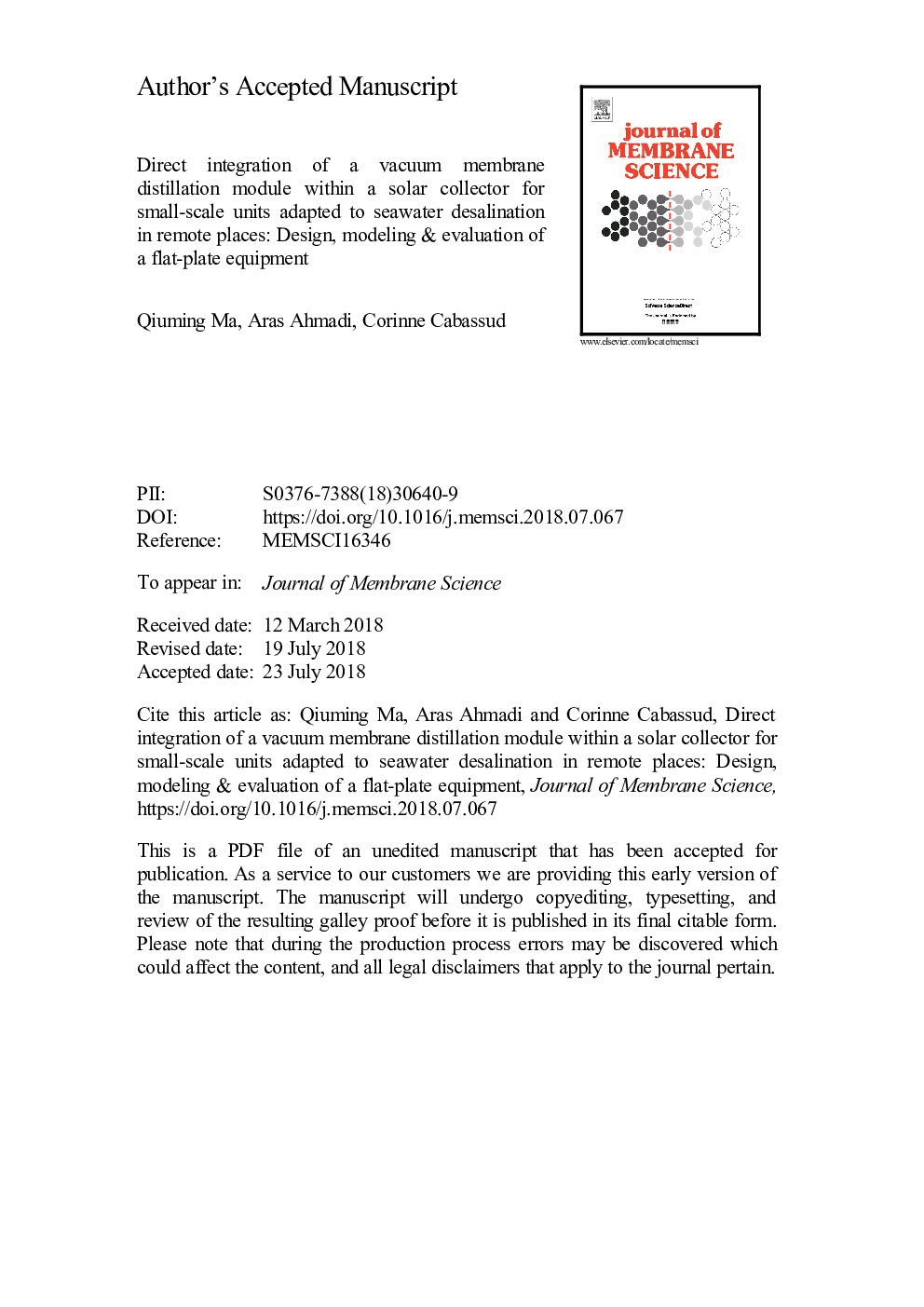| Article ID | Journal | Published Year | Pages | File Type |
|---|---|---|---|---|
| 7019630 | Journal of Membrane Science | 2018 | 43 Pages |
Abstract
Aiming to design a small-scale compact seawater desalination unit for remote coastal areas or islands, an integrated module coupling vacuum membrane distillation (VMD) and a solar flat-plate collector (FPC) was modeled and studied in the present work, with an extensive description of simultaneous mass and heat transfer for the hybrid solar-VMD module. The VMD model was built both at the scale of the membrane (membrane pore model) and at the scale of the module (feed bulk longitudinal model), and was then coupled with a detailed solar energy model. Effects of various solar and VMD parameters on daily water production, energy consumption and gained output ratio (GOR) were analyzed through several series of simulations. Results showed that without condensation heat recovery, lower operating temperatures were more favorable where a daily water production of 8â¯kgâ¯mâ2 of the collector or the membrane area for domestic drinking could be obtained over a 12-h operation. GOR was found to be above 0.7, which is quite comparable to simple-effect single-stage membrane distillation systems driven by indirect supplied heat. Further evaluations also revealed that the introduction of condensation heat recovery facility could markedly improve the daily water production up to 40â¯kgâ¯mâ2 for the same operation.
Keywords
Related Topics
Physical Sciences and Engineering
Chemical Engineering
Filtration and Separation
Authors
Qiuming Ma, Aras Ahmadi, Corinne Cabassud,
